- Details
- Hits: 1922
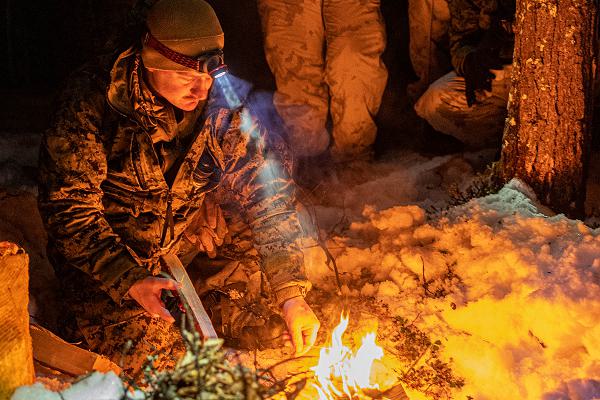
Setermoen, Norway. (January 28, 2024): NATO is welcoming its newest members in a big way by launching Nordic Response 2024, the alliance’s largest military exercise since the end of the Cold War. In this photo by Lance Cpl. Joshua Kumakaw, Sgt. Zachary Harper teaches fellow Marines how to build a fire in the freezing Arctic environment.
With Finland now a member and Sweden certain to join soon, NATO has expanded its annual Cold Response exercises to include Steadfast Defender in Germany, Poland and the Baltic states and another British-led marine exercise – Joint Warrior - which is being conducted in the sea areas between Scotland, Norway, and Iceland.
This year, over 20,000 servicemembers from fourteen countries will participate with Norway contributing around 8,000 troops, Norway adding 4,100 and 4,500 more from Finland. Other participating nations include the USA, Canada, Great Britain, Denmark, Germany, the Netherlands, Belgium, France, Spain, and Italy. The maneuvers will involve over fifty naval vessels, 110 aircraft , and more than fifty frigates and submarines. On the ground, some 11,000 troops will war game using tanks, artillery systems, and other tracked vehicles.
- Details
- Hits: 1319
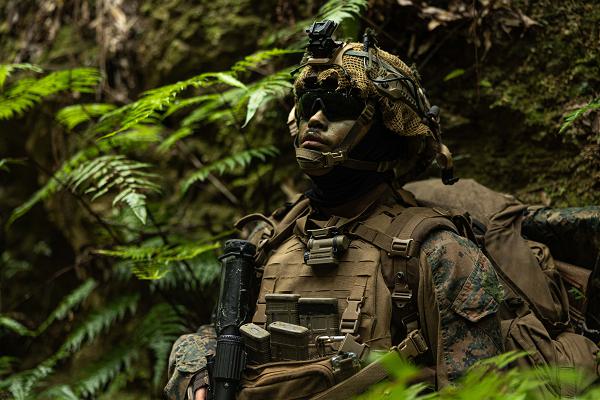
Camp Hansen, Okinawa, Japan. (February 10, 2024): What is one of the most powerful weapons on the battlefield but doesn’t fire a thing? Camouflage. In the photo above, Lance Cpl. Alexander Moralesgarcia conducts a patrol during the 3rd Marine Division’s annual Squad Competition. This Marine is concealing his presence using a variety of camouflage methods that have been evolving since World War I.
In the early annals of warfare, individual troops did not spend much time on personal concealment as most battles were fought in large columns or in the trenches. It wasn’t until World War I and the invention of the airplane that military units began to concern themselves with shielding their location from above.
The first crude attempts at employing camouflage to confuse the enemy began with the Navy and the “razzle dazzle” design. These zebra-like patterns were emblazoned on American ships, not to conceal but rather to confuse enemy gunners. The design’s optical effect made it impossible for enemy gunners to get an accurate “fix” on a target’s range, speed, and heading which undoubtedly saved thousands of allied lives.
The use of camouflage by individuals on themselves and their equipment really expanded in the jungles and deserts during World War II. The goal of individual concealment centers on applying colors and distinctive shapes to break up the pattern of the human form or the straight lines of equipment and weapons.
The face-paint worn by the Marine above looks randomly applied but it actually follows a carefully researched process designed to deceive the human eye. This is done through “countershading” or preventing the casting of a shadow. The military also uses “mimicry” to make military vehicles appear to look like something they are not. This tactic was famously used against the Germans when the allies created “dummy” divisions that were supposedly to be led by General George Patton. The deception worked and undoubtedly saves thousands of lives on D-Day.
- Details
- Hits: 895
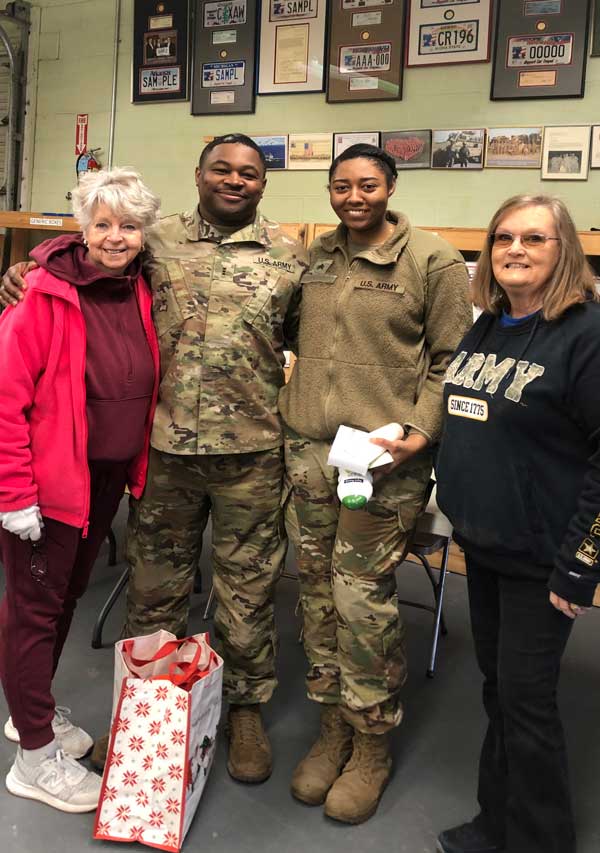
America, Feb 13, 2024 - Tons of American love heads out constantly to the troops all over the world. You get it to us, we get it to them. Pretty simple. And while they’re there that somebody back here knows about them, cares about them, and is doing their part to support them. Is this a great country or what!
- Details
- Hits: 833
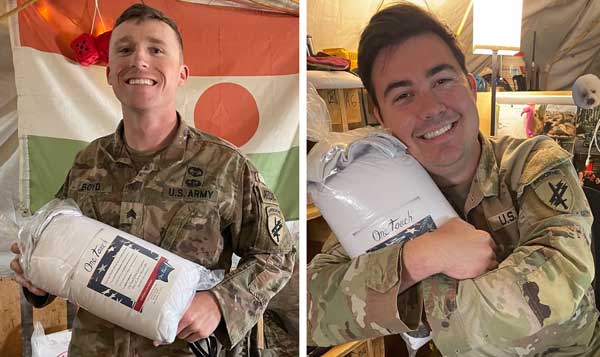
OCONUS, Feb. 6, 2024 – Somewhere out there, in places undisclosed, American soldiers take comfort with their One Touch pillows delivered by Your SOT Team, after being provided to us by good Americans and good American companies. From the home front to the front lines, if they're there, we’re with them!® Good job everyone!
- Details
- Hits: 763
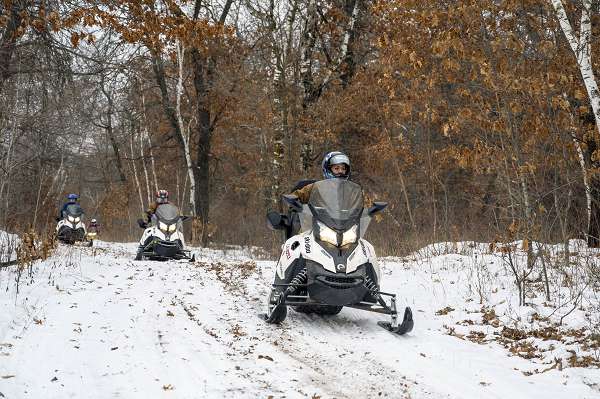
Little Falls, Minnesota. (January 22, 2024): The last place you would expect to find Navy Divers is roaring through frozen forests on snowmobiles. In this photo by Lance Corporal Hunter Jones, Sailors undergo Arctic mobility training during the annual Snow Crab exercises at Camp Ripley, Illinois. This 53,000-acre military and civilian training facility is operated by the Minnesota National Guard and is located near the city of Little Falls in the central part of the state. The location of the camp is ideal due to its numerous frozen lakes and harsh environment for most of the year.
As part of the Navy’s expeditionary combat force, deep-sea divers use the camp to evaluate their performance and to test their equipment in a simulated Arctic environment. At Camp Ridley, the ice is about 16-inches thick and the water temperature hovers just above freezing which leads to equipment challenges that many divers have not seen. During the exercise, the divers spent as much as ten hours below the frozen surface.
The Navy has increased its presence in the Arctic in recent years as have peer adversaries Russia and China. Under the Navy’s Strategic Blueprint for the Arctic, Navy divers are at the tip of the spear in building a more capable Arctic naval force. This global competition ensures we will likely see divers in some strange places well into the future.
- Details
- Hits: 1135
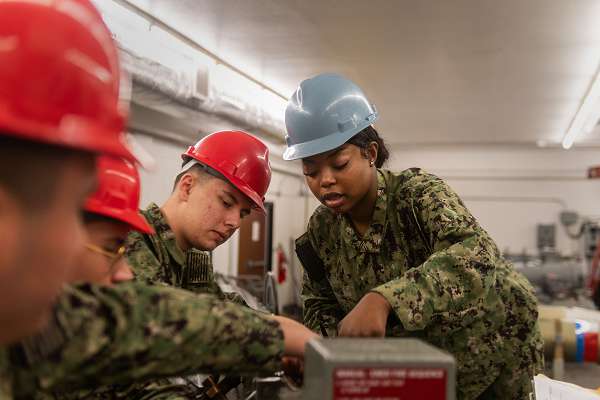
Naval Station Great Lakes, Illinois. (January 29, 2024): In this photo by Petty Officer 2nd Class Matt Hall, Sailors simulate loading a war shot torpedo into a surface vessel torpedo tube at Gunners Mate school. A Gunners Mate, or GM, is responsible for every type of weaponry aboard ship, from shot guns to guided missiles. If it shoots, it’s their gig.
These highly trained professionals are charged with securing all weaponry, repairing defense systems, and maintaining guided missile launchers. GMs are also experts at a multitude of small arms including shotguns, automatic rifles, pistols, and submachine guns. On the explosives side, GMs stow and maintain all bombs, portable and large-scale, along with mounted weapons systems and various rockets, torpedoes, and missiles. GMs also assist with operating shooting ranges, armories, and the storage and maintenance of arms.
To become a GM, a recruit must pass boot camp at Recruit Training Command Great Lakes followed by fifteen more weeks of specialized training at Class "A" Technical School. Here Sailors study electronics and the operation of launch systems and the torpedoes they will encounter aboard ship. After graduation, DMs may be assigned to a combat surface craft, a weapons installation, ordnance depot, or aviation activity in the U.S. or overseas.


